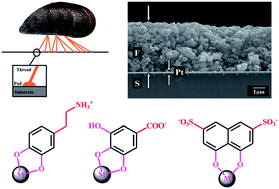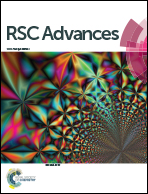A review of new methods of surface chemical modification, dispersion and electrophoretic deposition of metal oxide particles
Abstract
A bio-inspired chemical approach has been developed for the surface modification, dispersion and electrophoretic deposition (EPD) of metal oxide particles. The study of the chemical mechanism of mussel adhesion to different surfaces has driven the development of advanced dispersing agents with strong adsorption to oxide nanoparticles. The investigation of dopamine, caffeic acid, tiron and other molecules from the catechol family, and various molecules from salicylic acid, gallic acid, and chromotropic acid families revealed their strong adsorption to metal oxide surfaces. The analysis of dispersion and deposition yield data for various materials provided an insight into the influence of molecular structures of the organic dispersants on adsorption mechanisms and EPD efficiency. The adsorbed dispersants imparted new and unique properties to the nanoparticles. Further advancements in the EPD technology were achieved by the use of cationic and anionic dyes such as pyrocatechol violet, celestine blue, alizarin red from the catechol family and alizarin yellow, aurintricarboxylic acid and calconcarboxylic acid from salicylate family and their derivatives. It was discovered that polyaromatic dyes can be used as efficient co-dispersants for oxide materials, carbon nanotubes and graphene for the fabrication of composite films by EPD. Another important breakthrough was the development of film forming dispersants for EPD nanotechnology. New strategies have emerged for the synthesis of non-agglomerated nanoparticles of controlled size, organic fibers and coated particles. The use of new dispersants with strong interfacial adsorption and multifunctional properties has driven the development of advanced composites, containing metal oxide nanoparticles, conductive polymers, carbon nanotubes, graphene, polyelectrolytes and other materials. Colloidal and interface chemistry of new dispersing agents is emerging as a new area of technological and scientific interest.


 Please wait while we load your content...
Please wait while we load your content...